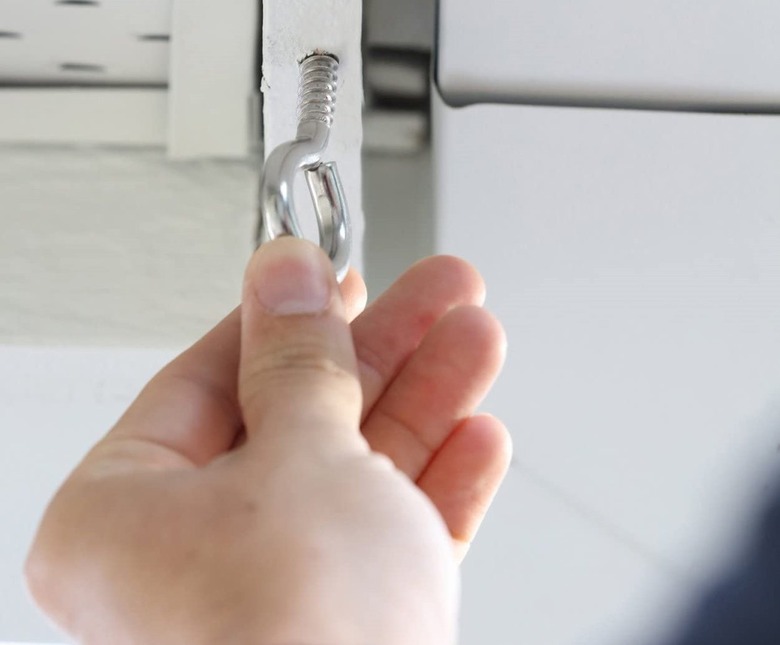How To Install Eye Hooks On A Piece Of Wood
We may receive a commission on purchases made from links.
Eye hooks come in handy in many places around the house. You can install one in a ceiling rafter for hanging plants, and you need an eye hook on your gate post or door jamb if the gate or door has a latch hook. You can also use eye hooks to suspend a shelf on ropes from the wall or the underside of a cabinet.
An eye hook has screw threads on one end and a round metal "eye" on the other. It's one of the simplest types of hooks to install because the eye provides a natural place to insert a screwdriver or similar implement to use for leverage to screw in the threads. The problem most people have is getting the threads started, but that's an easy problem to solve.
Sometimes, It Just Takes a Tap
Sometimes, It Just Takes a Tap
Eye hook screw sizes run the gamut from tiny ones with 3/8-inch openings to oversize ones with openings of 1 1/2 inches or more. Whichever size you're installing, you first have to get the threads to bite into the wood before you can screw it in. When you're installing a small one, you can usually do this by tapping the head with a hammer.
Set the hook in the place you want it with the pointed end of the threaded shaft on the wood and then tap the head with a hammer to partially drive the shaft into the wood. If you do this with enough force, the hook will remain embedded in the wood. To screw it in, grasp the head — being careful not to pull on it — and push down while you turn it clockwise. Once it bites and you feel resistance, stop pushing and keep turning until the eye is flush with the wood.
You May Need a Pilot Hole
You May Need a Pilot Hole
It's more difficult to get larger bolts (1/2 inch or wider) to bite just by tapping them, and for these, it makes your life a whole lot easier to drill a pilot hole. The pilot hole also prevents the wood from splitting when you screw in the hook.
Choose a drill bit with a diameter slightly smaller than the diameter of the screw threads. Drill a hole that's as deep as the shaft is long. If you're installing the hook on a piece of wood that has two visible sides, be careful not to drill completely through it. If the shaft of the hook is longer than the wood is wide, you'll also want to avoid sinking it all the way, so premeasure first to determine how much to tighten the hook.
Screw in the Hook With a Screwdriver or Nail
Screw in the Hook With a Screwdriver or Nail
Once the hook has bitten into the wood, you may need an implement to screw it in, especially if you're installing a large one or you're installing the hook in a dense hardwood. Because the hook has an eye, you can simply use any long, rigid object that fits through it and use that for leverage.
A screwdriver is a perfect tightening tool for large eye hooks, but some bolts are too small for a standard screwdriver shaft. If you don't have a screwdriver thin enough to go through the eye, use a nail or even a screw. Lock the head onto the hook and use the other end as a handle to turn it. In a pinch, you can also grip the eye with pliers and use these to turn it. A quick way to tighten a screw eye is to insert a screw hook (not a screw eye) into your drill, hook it onto the eye and operate the drill to tighten down the eye.
